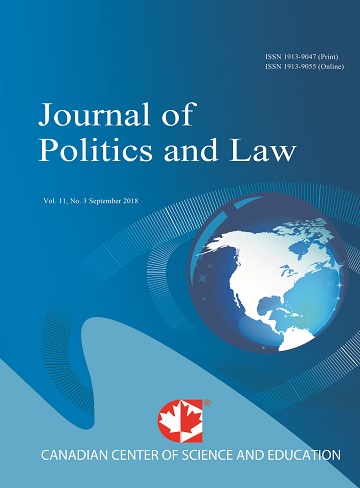Financial Restructuring and Asset Management Companies in International Financial Markets. Case Study of China: Lessons for Tanzania
- Naumi K. Mohammed
- Guo Dexiang
Abstract
Each company owns its “life cycle”. Throughout this cycle, companies use many factors that impact their business to track outcomes and shortcomings. Circumstances such as “financial restructuring” inaction and insolvency are the basic stages of a company’s lifecycle. The financial restructuring can be articulated as a deteriorating situation to circumstances in which the corporation is incapacitated in meeting its financial obligations, where the first signs of financial shortage are generally taken as a violation of trust/contract with suppliers and the payment of the dividends. This paper reviews the mechanism of restructuring of the bank by focusing on areas such as assets Management Companies (AMCs), their institutional characteristics and roles in the Chinese banking system, legal issues regarding banks’ operations in China and finally addresses the law and policy issues related to the disposal of NPLs in the banking system China. The finding is that, since this ‘phenomenon’ is not yet applicable to Tanzania, and also it is amidst the basic factors for Foreign Direct Investments in a country, Tanzania can look to China’s experience as a lesson, especially in the solicitation of this method without opposing political theory. That is because this feature of China’s unique legal system basing more on practicality rather than judicial power.
- Full Text:
 PDF
PDF
- DOI:10.5539/jpl.v14n3p74
Journal Metrics
h-index (2017): 14
i10-index (2017): 39
h5-index (2017): 9
h5-median (2017): 11
Index
- Academic Journals Database
- ACNP
- ANVUR (Italian National Agency for the Evaluation of Universities and Research Institutes)
- Berkeley Library
- CNKI Scholar
- COPAC
- CrossRef
- DTU Library
- EBSCOhost
- Elektronische Zeitschriftenbibliothek (EZB)
- EuroPub Database
- Excellence in Research for Australia (ERA)
- Genamics JournalSeek
- GETIT@YALE (Yale University Library)
- Ghent University Library
- Google Scholar
- Harvard Library
- HeinOnline
- INDEX ISLAMICUS
- Infotrieve
- Jisc Library Hub Discover
- JournalGuide
- JournalTOCs
- LOCKSS
- MIAR
- Mir@bel
- NewJour
- Norwegian Centre for Research Data (NSD)
- Open J-Gate
- PKP Open Archives Harvester
- Publons
- Pubmed journal list
- RePEc
- ROAD
- Scilit
- SHERPA/RoMEO
- Standard Periodical Directory
- Stanford Libraries
- UCR Library
- Ulrich's
- UniCat
- Universe Digital Library
- UoS Library
- WorldCat
- Zeitschriften Daten Bank (ZDB)
Contact
- William TaiEditorial Assistant
- jpl@ccsenet.org
